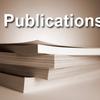Publications
Do Health Information Sources Influence Health Literacy among Older Adults: A Cross-Sectional Study in the Urban Areas of Western China
Category: Journal Articles
People:

Li, C.; Liu, M.; Zhou, J.; Zhang, M.; Liu, H.; Wu, Y.; Li, H.; Leeson, G.W.; Deng, T. (2022) Do Health Information Sources Influence Health Literacy among Older
Adults: A Cross-Sectional Study in the Urban Areas of Western China. Int. J. Environ. Res. Public Health, 19(20), 13106; https://doi.org/10.3390/ijerph192013106.
Background: Previous studies have found that the dissemination pattern and delivery mechanism of information can provide crucial resources and empowerment for individuals to the promotion of health literacy. The present study investigates how health information sources are associated with health literacy among older adults in west China, and tries to explain the mechanisms underlying the link between health information sources and health literacy in the Chinese context. Methods: The cross-sectional study employed a representative sample of 812 urban citizens aged 60 and older in 2017 in Western China. Results: We found that health information sources including healthcare practitioners (B = 4.577, p < 0.001), neighbors (B = 2.545, p < 0.05), newspapers (B = 4.280, p < 0.001), and television (B = 4.638, p < 0.001) were positively associated with health literacy. Additionally, age (B = −1.781, p < 0.001) was negatively associated with health literacy, and the socio-economic status factors including minority (B = −10.005, p < 0.001), financial strain status of perceived very difficult (B = −10.537, p < 0.001), primary school (B = 11.461, p < 0.001), junior high school (B = 18.016, p < 0.001), polytechnic school or senior high school (B = 21.905, p < 0.001), college and above (B = 23.433, p < 0.001) were significantly linked to health literacy, and suffering from chronic diseases (B = 3.430, p < 0.01) was also positively related to health literacy. Conclusions: Health information sources including healthcare practitioners, neighbors, newspapers, and television have a strong influence on health literacy, which implies that the four main types of sources are the important patterns of health information dissemination in the reinforcement of health literacy. In addition, the present findings also indicate age, minority and disease differences in health literacy and confirm the influence of enabling factors including educational attainment and financial strain on health literacy. Based on these findings and their implications, specific evidence is presented for the reinforcement of health literacy in interpersonal and mass communication, and in the educational and financial settings in the Chinese context. The present results also suggest that the age-specific, minority-specific and disease-specific measures should be taken to promote health literacy among older adults.
- Population Horizons - Special Issues & Working Papers
- Population Horizons Archive (2015-2018)
- Blog
- IARU Newsletter
- Journal of Population Ageing
- Population Horizons Publications
- Books
- Book Chapters
- Journal Articles
- Research Reports & Policy Briefs
- Institute Working Papers
- Papers by members of the Institute's Regional Networks
- Visitors Papers
- Global Ageing Survey Research Reports
- Ageing Horizons
- Presentations & Posters
- Factsheets

